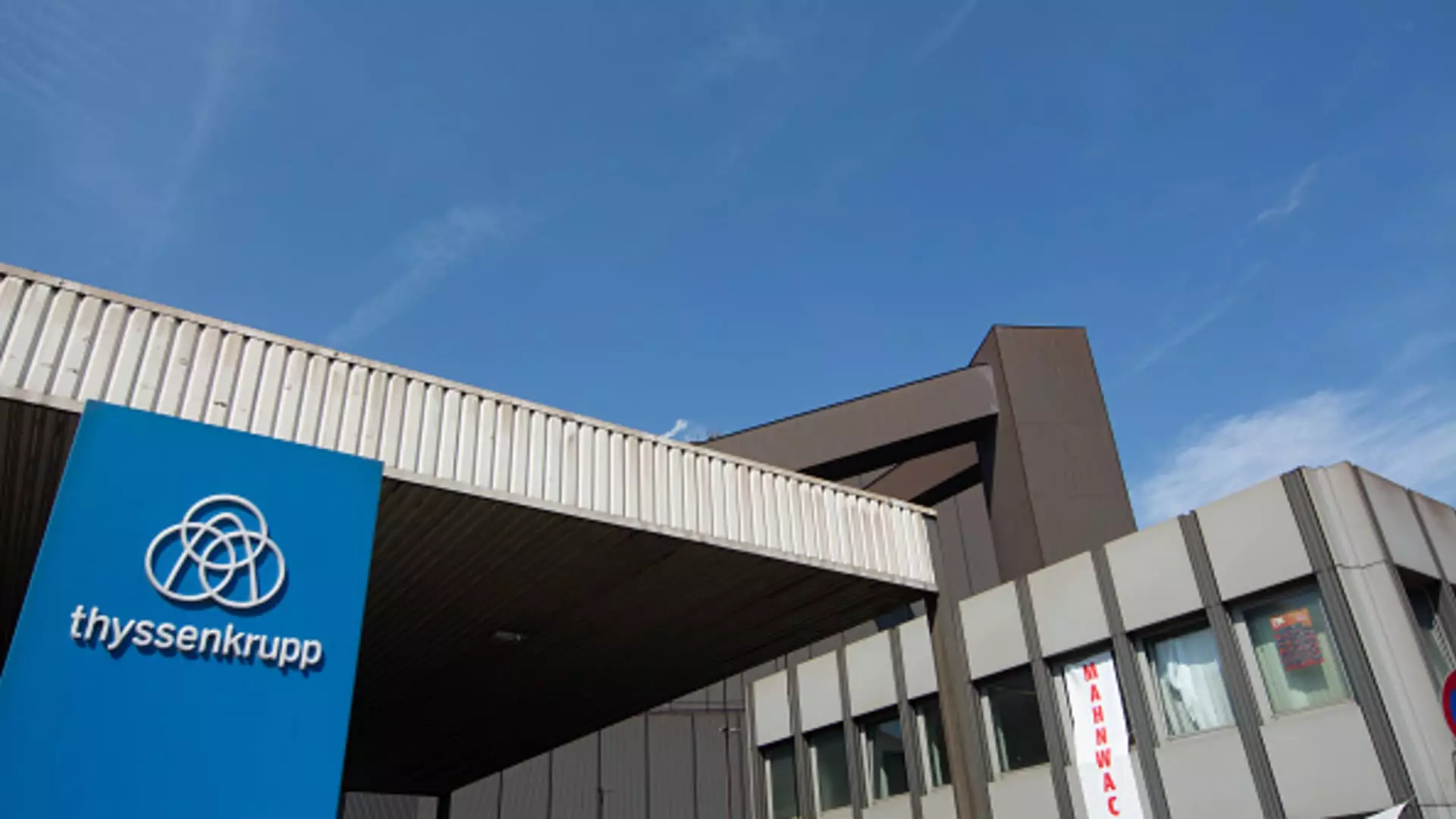In a surprising turn of events, shares of Thyssenkrupp soared by 7.9% following the company’s latest financial disclosures, which indicated a reduction in net loss figures. This rebound reflects investor optimism in response to Thyssenkrupp’s report that highlighted a narrower net loss for the fiscal year, albeit along with significant impairment charges within its Steel division. The company reported a net loss of €1.5 billion ($1.59 billion), a marked improvement from the €2 billion loss reported in the previous year.
During the fourth quarter, Thyssenkrupp managed to post adjusted earnings before interest and taxes (EBIT) that reached €151 million, significantly outpacing the Visible Alpha consensus of €120 million as highlighted by market analysts. These figures suggest that Thyssenkrupp is potentially on a path to financial stabilization, fueled by its ongoing restructuring efforts and a focus on strategic decision-making that could underpin its recovery.
Despite the encouraging financial indicators, the path forward remains fraught with challenges. Thyssenkrupp’s Steel Europe division continues to struggle, having contributed significantly to the company’s overall asset impairments, which totaled approximately €1.2 billion in the last year. The largest portion of these impairments—€1 billion—was linked exclusively to the Steel Europe segment, which prompts concerns regarding the division’s sustainability and overall market positioning.
CEO Miguel Lopez has emphasized that the upcoming fiscal year will be critical for Thyssenkrupp, particularly regarding their main strategic concerns, including the future of Steel Europe and their Marine Systems division. There is a palpable tension as the company navigates the complexities of restructuring while trying to capitalize on the new opportunities presented by the global green transformation.
Thyssenkrupp’s commitment to restructuring is evidenced by its strategic divestment efforts, notably the sale of a 20% stake in Steel Europe to the EP Corporate Group—a move intended to refocus and streamline operations within the division. The discussions surrounding a potential 50:50 joint venture present a significant opportunity not only for financial recovery but also for revitalizing the brand’s market competitiveness.
Additionally, Thyssenkrupp is contemplating offloading its Marine Systems segment, further indicative of its broader strategy to optimize its operations and focus on core competencies. Such divestments may serve to bolster the company’s financial health, allowing it to channel resources towards more promising ventures and, ultimately, enhancing stakeholder confidence.
The context in which Thyssenkrupp operates cannot be overlooked. As Germany confronts its political and economic challenges, with business activity plummeting to a seven-month low and political instability looming, Thyssenkrupp’s difficulties are reflective of broader industry trends. The government’s negotiations for state support underline the gravity of the situation; as an export-driven economy, Germany faces a decline in global demand which could adversely impact Thyssenkrupp’s recovery trajectory.
While the recent financial results may herald a cautious optimism for Thyssenkrupp, significant hurdles remain. The company’s ability to navigate its restructuring ambitions, adapt to shifting market dynamics, and leverage strategic partnerships will be instrumental in determining its recovery and future viability.

